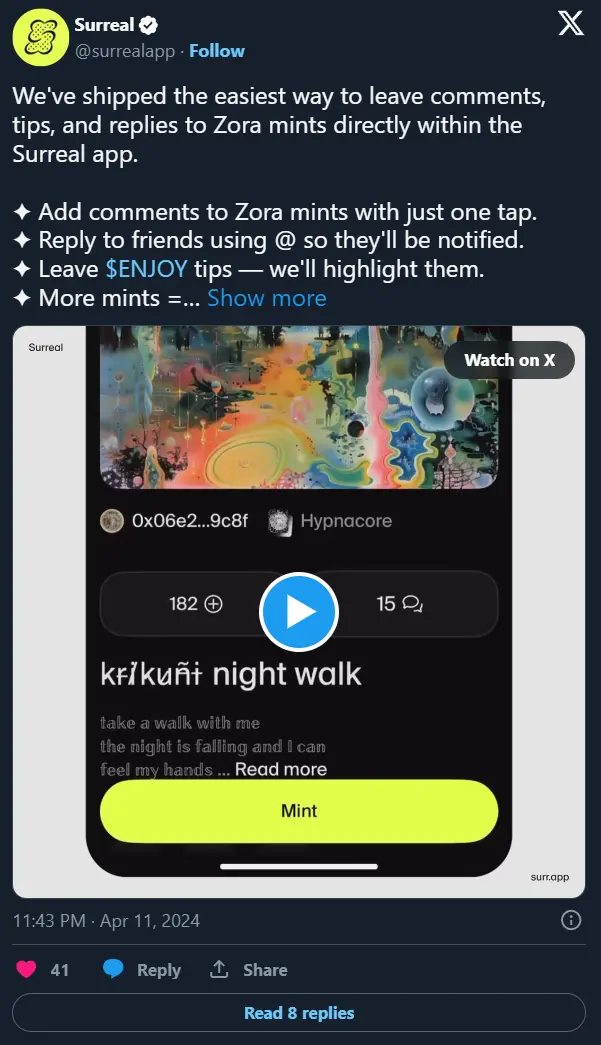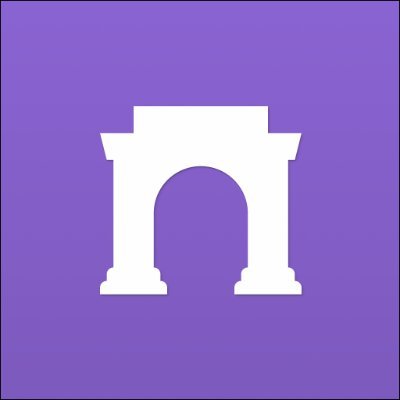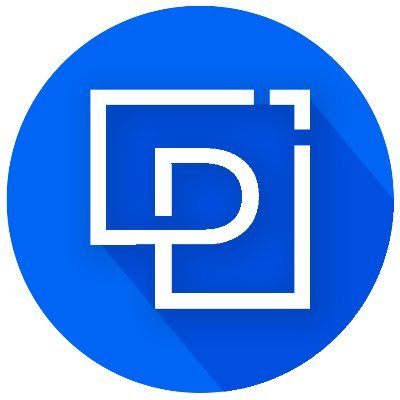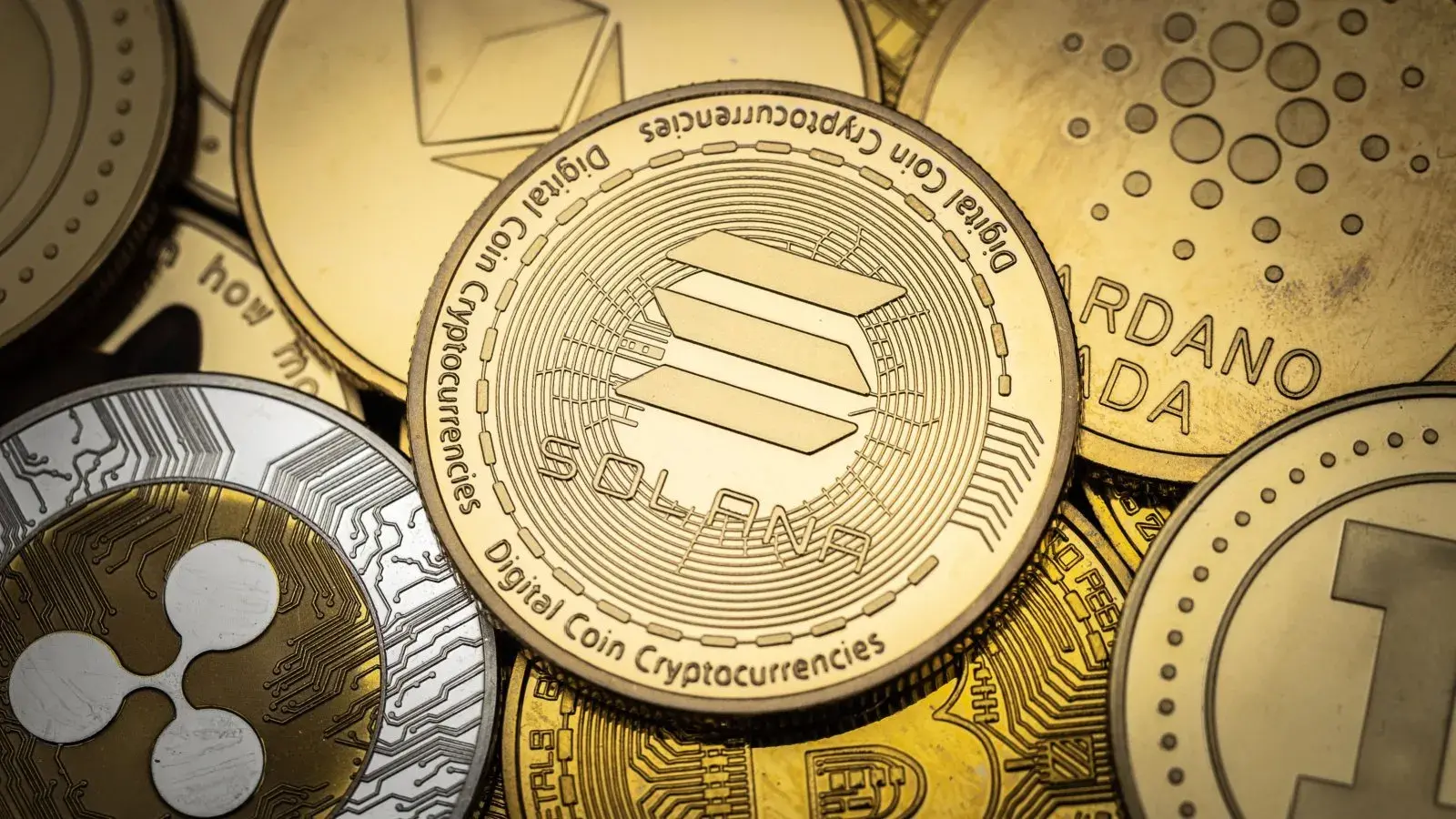Daily active users hit a new high, reviewing the highlights of Farcaster in April: open protocol, social layer, and FarFi
Original Title: Farcaster April Recap: Open Protocol, Social Layer, and FarFi
Original Author: 0xluo.eth, Farcaster Frontier Explorer
In the soon-to-end month of April, many events took place on Farcaster, with daily active users reaching a new high of around 40,000, making it an increasingly significant protocol/community in the crypto world. This growth is likely driven in large part by the wealth effect of memecoins within the ecosystem and the launch of various new products. Although assets related to the Farcaster ecosystem have inevitably been affected by the overall decline in the crypto market due to various risk factors, many friends holding Farcaster-related assets welcomed April with joy and bid farewell to it with sadness. Nonetheless, there are still many impressive highlights on Farcaster worth revisiting.

https://dune.com/pixelhack/farcaster
As I prepared to start the recap, I found that various public chains, applications, and tokens related to the Farcaster ecosystem are interconnected, with each containing elements of the others. I can only attempt to break them down and choose several different dimensions for discussion.
Being an open protocol
First, let's start with the team-led Farcaster protocol and the main client, Warpcast. This month, Farcaster launched the Actions feature, which is another significant update following Channels and Frames. The Actions feature allows users to interact with Casts by clicking below them, enabling actions such as liking, translating, tipping, and viewing information, and it can also invoke Frames for further interaction.

https://warpcast.com/v/0xbb2ed1b9
Additionally, it is interesting that @nbragg quickly developed a hot potato game based on the Actions feature, where players can pass a potato by clicking the "pass the potato" Action under a friend's cast. The player who receives the potato must quickly pass it on, and the player who holds the potato for the shortest time wins. I look forward to seeing more social games developed based on Farcaster that can fully utilize the Actions feature and interact with Frames, expanding their gameplay within Farcaster and promoting better viral growth alongside their main games.
The team continues to work hard on many small details to improve user experience (for updates, see /fc-updates), such as setting up Priority mode for information streams and notifications in Warpcast to reduce the impact of spammy accounts. This is precisely why Farcaster has maintained a relatively good community atmosphere.

https://warpcast.com/0xluo.eth/0x39918502
Meanwhile, third-party clients for Farcaster are also growing stronger, allowing users to access them in case Warpcast goes down due to high traffic, showcasing the openness of Farcaster as a protocol. Recently, @slokh launched nook, which currently allows users to create "Nooks" and "Feeds" to customize their information streams by setting rules such as keywords, users, and channels, making it easier for users to track content of interest.
Moreover, more and more clients now support both Lens and Farcaster social protocols. The Phaver from the Lens ecosystem, after actively embracing the Farcaster ecosystem with Buttrfly, has also chosen to hold events on Farcaster and claims it will support cross-platform posting between Lens and Farcaster in the future. I believe their choice indicates that those who recognize the times are the true heroes. Even the client used by Vitalik, Firefly, not only supports cross-posting across Farcaster, Lens, and Twitter but also enhances cross-platform aggregation features, making it easier to browse articles on Mirror and Farcaster's native blogging platform, Paragraph, becoming a comprehensive on-chain social aggregation platform.
David Furlong's Farcaster personal homepage farcaster.in conveniently links to personal homepages on Warpcast and other clients, such as Supercast, Firefly, and Yup. More Farcaster ecosystem clients can be browsed on Decaster, a one-stop navigation site developed by @haole, which includes clients, dApps, commonly used tools, developer tools, popular Channels, Frames, Actions, and more.
Being a social layer
Currently, the main tokens and NFT assets in the Farcaster ecosystem are issued on the Base chain, which is also part of the Coinbase ecosystem. To date, Farcaster has not only become a launchpad for memecoins but also serves as an incubator for many L3 and even L4 projects, naturally acting as the social layer for these memecoins on L2, L3, and L4, supporting their asset issuance, operation, promotion, and community building.
 Farcaster as social layer for L2s, L3s and L4s
Farcaster as social layer for L2s, L3s and L4s
Degen
Let's start with $DEGEN, the leading memecoin in the Farcaster ecosystem and also on the Base chain. Some say, " $DEGEN can no longer be considered a memecoin because it has many utilities," implying that only those without any utility are memecoins. However, according to Li Jin's classification of memecoins, $DEGEN can be considered a community-first memecoin, also known as a scene memecoin:
These tokens are launched as focal points for decentralized communities with shared values and missions, and they can play a role in executing rituals/norms.
In this sense, many memecoins rooted in the Farcaster community can be called scene memecoins, as the Farcaster community itself and its open framework allow for the easy design of various application scenarios for memecoins, opening up imaginative possibilities for them.
As the leading scene memecoin, $DEGEN is deeply rooted in the Farcaster community, actively interacting with various applications and projects within the Farcaster ecosystem, and has already developed a variety of application scenarios, allowing users to share, tip, mint, trade, and build with $DEGEN.
· Share with $DEGEN: As a form of meme dissemination, the iconic gentleman's hat, along with various derivative creations built around this element, including various Channels, Frames, NFTs, and Tokens, are emerging endlessly. The "$DEGEN Archives" article contains a more detailed description in the " $DEGEN Memes and Symbols" section.
· Tip with $DEGEN: The second round of airdrops for $DEGEN allows each person to have a certain tipping quota daily, which can be used to tip in the comments section of others' casts, with the total amount tipped by each person determining the quantity of airdrops. Third-party clients like Supercast and Degencast support quick buttons for tipping, and there are now Actions available for convenient tipping.
· Mint with $DEGEN: Both the NFT minting platforms Zora and Highlight support minting NFTs using $DEGEN. Additionally, Zora has a dedicated exploration interface for NFTs that can be minted with $DEGEN.

· Trade with $DEGEN: Following the short video application Drakula, the sports club application Bracket.game, prediction platform Perl.xyz, and more Farcaster ecosystem applications support trading using $DEGEN. In the upcoming FarFi section, we will see that most SocialFi products in the Farcaster ecosystem use $DEGEN as their circulating currency. The Jeeves app also lists various applications that support $DEGEN trading.
· Build with $DEGEN: This refers to the launch of Degen L3 based on the Base chain using Syndicate, where development and construction can take place, and Farcaster naturally becomes the social layer supporting Degen L3. Since its launch at the end of last month, it has quickly attracted a large number of users, and the launches of memecoins like $WAKE, $GOAT, $ATH, and the FarCats Degenesis NFT have rapidly gained traction within the Farcaster community, achieving high popularity in a short period. Notably, ATH ᖽ, which originated from the OG Degen Chain group chat on Warpcast, claims to become the growth engine for the Degen L3 ecosystem and its community by building a DAO, games, infrastructure, and L4 based on Degen L3.
Currently, the TPS of Degen L3 has risen to second place in the Ethereum ecosystem, only behind the Base chain, but the DeFi, NFT market, and other infrastructure on it are still in their infancy. Recently, during the "Deploy on Degen" event week, 40 projects and developers received a total of over 10 million $DEGEN in rewards. With these projects gradually going live, I believe Degen L3 will become even more vibrant.

https://l2beat.com/scaling/activity
Base
In the past month, we have seen Jesse Pollak, the head of the Base chain, go into full promotional mode, enthusiastically recommending various projects on the Base chain and commenting "based" everywhere. Against the backdrop of the Cancun upgrade reducing transaction costs, Coinbase's full support, and strategic cooperation with OP, the Base chain continues its rapid growth from March, with TPS ranking first in the Ethereum ecosystem. A significant part of this is, of course, driven by the explosive growth of memecoins on the Base chain, with Jesse waving the flag of memecoins to build an on-chain economy, even tossing a bag of memecoins in his PPT.

https://warpcast.com/0xluo.eth/0x39918502

https://twitter.com/0xLuo/status/1782413986102936003/photo/1
The NFT ecosystem on Base has also experienced explosive growth, with several days where the OpenSea homepage was entirely filled with Base NFTs, leading many to shout slogans like "NFT revival on Base."

Base NFTs take over OpenSea (https://warpcast.com/0xluo.eth/0x71bc221a)
Of course, I am more concerned about projects on the Base chain that are closely integrated with the Farcaster community, including the large number of memecoins and NFTs launched on the Base chain from Farcaster. The existence of these projects allows Farcaster to play its role as the social layer of the Base chain.
Scene memecoins
Beyond $DEGEN, Ham is another significant scene memecoin issued on the Base chain developed by @deployer, with its channel/lp followers reaching 30,000. Similar to the tipping mechanism of $DEGEN, we can also see its iconic logo being tipped in the comments section under various casts. More similarly to $DEGEN, it announced in April that they would launch Ham L3, gaining high attention once again. Additionally, Ham has introduced a convenient on-chain tipping tool called Floaties, which supports tipping various tokens including $TN100x, $DEGEN, $HIGHER, and $MEMBER in the comments sections of Farcaster and Twitter, helping more memecoins expand their application scenarios.
Since the end of last month, when mfers chose to issue the memecoin mfer coin ($mfer) on the Base chain, many NFT projects have launched their own memecoins. For example, Nouns DAO community member @dotnouns raised funds through Party.app in April to launch the memecoin Noggles ($NOGS), which is derived from Nouns IP, aiming to empower the entire Nouns ecosystem, and they also introduced a tipping scheme on Farcaster.
$Higher is another highly regarded memecoin that has started in the Farcaster ecosystem on the Base chain, with its iconic symbol ↑ and artworks created around it being widely seen on Farcaster, prompting many V users to check in at the /higher channel. Both Zora and Highlight support minting NFTs using $HIGHER.
I believe its popularity partly stems from its easy-to-understand and shareable name and symbol. James Beck believes Higher provides an easy template for trend-following creations, and the collection of artworks on Zora, along with the investment-attractive token, allows everyone to participate, successfully attracting all four consumer groups in the Aspirational Economy: connoisseurs, super fans, discerning buyers, and browsers.

$HIGHER's Aspirational Economy (https://jamesbeck.mirror.xyz/5QkrHusMclOWsa9sKH4MQhG8UXMJZvi7iKXFy64YYTY)
NFTs
Since its launch, the Onchain gaias NFT on the Base chain has received high attention from the Farcaster community. @ciniz released Zora NFT in April to detail its vision as "Onchain General Artificial Intelligence Agents": to create a revolutionary platform that allows ordinary people to access the development of General Artificial Intelligence (AGI). The ideal sounds grand, and we can only wait and see.
Additionally, artist @jvmi created interactive generative art swatches, and I found it fascinating to interact with those different colors and shapes in its NFT interface.

The Onchain coin project, known for its "rolls," launched Prescription Pass and Onchain Pills NFTs in April, during which the minting of the former even caused Basescan, Warpcast, and Highlight to crash simultaneously. Following this, they also released the points game Chain Game and announced the launch of Onchain L3 using conduit services, aiming to attract more users to participate in on-chain activities through a dedicated chain with game and social scoring mechanisms.
The common characteristic of these projects rooted in Farcaster is that by operating communities on Farcaster and accumulating reputation, they can quickly gain community support when warming up to the sale, and this support will become a lasting driving force for their continued development.
Onchain games
In the realm of on-chain games, the MMORPG game EthXY on the Base chain also announced that they will utilize chaindrop services to build an L3 based on the Base chain. The "Luckshot Duel" and "Loot Drop" Frames launched on Farcaster previously also garnered widespread attention from the Farcaster community. They serve as excellent examples of utilizing the Frames feature to promote and interact with their main games within the Farcaster community. Another popular game on Farcaster, CropXYZ, a farming simulation game that has been warming up to sell seed NFTs but has not yet launched, also claims it will support gameplay on both web and Frames.
I have always hoped to see on-chain games that combine Farcaster's social graph to create on-chain social games. In the Web2 era, platforms like Facebook, Renren, and QQ Space achieved rapid growth through the combination of social and gaming, and this chemical reaction may still hold true on-chain. Farcaster has established a high-quality social graph and an active community, and leveraging Farcaster's social identity can help on-chain games quickly acquire users, promote viral growth, and build community. We are just waiting for playable on-chain games to emerge. I look forward to seeing more on-chain social games in the Farcaster ecosystem that can effectively interact with the community and facilitate social interactions among different users using Farcaster's Frames, Actions, and other features, as social games will have greater user stickiness.
Zora
Zora has always been closely linked with Farcaster, as many NFTs on Farcaster choose to be issued on the Base chain or Zora chain. Zora supports prepaying gas through the Boost feature, allowing users to mint NFTs directly in Farcaster's Frames without gas fees. Thus, Farcaster naturally serves as the social layer for Zora dApps and the Zora chain.
Focusing on the Zora chain, in April, the number of active addresses and transactions on the Zora chain reached an all-time high. This should be related to two reasons: first, Zora announced support for minting NFTs with ERC20 tokens across different chains, providing application scenarios for many memecoins, such as $DEGEN, $HIGHER, and $CRASH on the Base chain, as well as the two leading memecoins $ENJOY and $IMAGINE on the Zora chain. The second reason is that both $ENJOY and $IMAGINE announced their respective creator incentive programs, significantly enhancing users' willingness to use the Zora chain, and minting with a comment has become a habit for many Zora users. These two reasons complement each other, driving the rapid growth of the Zora chain and the two scene memecoins.

https://twitter.com/AlanaDLevin/status/1778151713263747269/photo/2
$ENJOY is the largest memecoin on the Zora chain. Although it has the backing of Seedclub, its initial response was lukewarm until early April when $ENJOY launched its second round of airdrop plans that allowed tipping on the Zora chain. Therefore, as a scene memecoin, $ENJOY has many application scenarios:
· Share with $ENJOY: $ENJOY also has a large number of meme images created around its logo, the blue ball, and !!!.
· Mint with $ENJOY: Zora supports minting through $ENJOY, and there is also a dedicated exploration interface for NFTs that can be minted with $ENJOY on Zora.
· Tip with $ENJOY: Tipping with $ENJOY occurs in the comments section of minting NFTs, similar to how $DEGEN tips in the comments section of casts. Additionally, since the tipping is a weekly share, if one does not tip, they miss out, and it is not an on-chain token, so users are willing to tip others. Furthermore, multimedia NFT clients Surreal and on-chain event aggregation client Interface both support more convenient tipping in the comments section when minting Zora NFTs within their apps, which has helped these two clients transition from niche to well-known, creating a win-win situation for the Farcaster ecosystem projects.


https://warpcast.com/interface/0x4eb465a7
Similar to $ENJOY, $IMAGINE has also launched its own tipping program, allowing tipping in the comments section when minting Zora NFTs. Now, both $ENJOY and $IMAGINE have become important parts of the creator economy on the Zora chain, with more and more artists choosing to publish their works on Zora to generate revenue.
Overall, Farcaster has become the base camp for the social layer of both Base and Zora L2s, and it has also become an incubator for various types of L3 and even L4 projects. Of course, theoretically, Farcaster can serve as the social layer for any chain, as any project on any chain can choose to establish Channels on Farcaster and build communities. The openness of Frames also supports interaction with any chain for asset issuance, although there may be some differences in specific forms. Previously, there have been inscriptions from the BTC community and NFT projects on SOL that chose to launch on Farcaster. However, due to reasons such as the founders, funding backgrounds, and user habits, Farcaster has been closer to the Base chain and Zora chain. Will more chains choose to embrace Farcaster in the future?
Being an enabler of FarFi
Recently, we have seen an increasing number of SocialFi/CreatorFi applications built around Farcaster, such as:
· Drakula: on-chain TikTok
· Clubcast: on-chain Patreon
· AlfaFrens: on-chain OnlyFans?
· Jam: on-chain Instagram
….
I have been trying to find a suitable term to describe them, so let's call it FarFi (Farcaster-based SocialFi ➔ Farcaster Finance). FarFi refers to applications built on Farcaster's social identity that have their own token economics, most of which claim to empower content creators or create a co-creation economy between creators and users.
FarFi has two important components: one is Farcaster, and the other is Finance. Both of these have significant differences from other SocialFi in the Farcaster ecosystem. The rapid success of the short video application Drakula, built on Farcaster, has highlighted the key point of FarFi: Farcaster's open framework and composability provide valuable on-chain social graphs needed for cold-starting applications, allowing for rapid user acquisition, while scene memecoins represented by $DEGEN can serve as the native circulating currency of the Farcaster ecosystem, providing the asset liquidity needed for cold-starting applications. I once said Farcaster + composable application Lego + $DEGEN economics = on-chain social summer, and thus in April, we saw FarFi apps springing up like mushrooms after rain.
For FarFi, I attempted to classify them based on the objects they trade, generally focusing on tradable profiles, casts, and channels. Moreover, the vast majority use the widely adopted scene memecoin $DEGEN as the circulating currency within their applications.

Farcaster as an enabler for FarFi
Tradable profiles
Since the launch of friend.tech last year, the model of trading user profiles based on bonding curves has become very common, often resulting in high transaction fees, typically shared between the platform and creators. This model has become the preferred choice for building SocialFi applications based on Farcaster, except here, the profiles utilize Farcaster's social graph.
uncuts and farcards

uncuts.app and Farcards
Uncuts.app is a collectible card game launched by REKT, where users can collect and trade cards of different users and build teams, with the strength of different cards determined by their activity data on Farcaster. Farcards is somewhat similar, developed by @undefined based on mint.club, which is a collectible card game exclusive to Farcaster users. Everyone can easily mint their own card through their Frame and trade other users' cards, with different levels based on user activity on Farcaster, although more gameplay has yet to be released.
If merely speculating on identity cards seems a bit unimaginative, people have already grown weary of such speculation. Designing a card game similar to Hearthstone and Magic: The Gathering based on different user cards would be quite interesting.
Clubcast
The biggest feature of Clubcast is the introduction of token-gated casts. If you purchase a user's club token, you can unlock and view the encrypted content they send on clubcast.xyz and in Farcaster's Frames.

https://warpcast.com/clubcast/0xf5b90b02
Thus, it is somewhat similar to membership sites like Patreon, where certain content can be set to be viewable only by subscribed members. In on-chain social platforms, this form of token-gated posts is also present in the Lens ecosystem client Orb, where posts can be set to be visible only to those holding a specific NFT. I believe this model should be considered an infrastructure that requires applications to support sending content viewable only by subscribed members.
AlfaFrens
AlfaFrens is a SocialFi product led by @Vijay that provides exclusive content to subscribers, similar to friend.tech. Users spend $DEGEN to subscribe to different creators' Channels (distinct from Farcaster's Channels) to gain exclusive information from the creators within the Channel while earning $ALFA. $ALFA can be staked to invest in Channels, earning $DEGEN rewards. The more a subscriber stakes in a creator, the more $ALFA they receive.

https://warpcast.com/0xluo.eth/0x3a357774
The obvious difference from friend.tech is that it no longer uses the bonding curve-based Key model but applies a dual-token mining model to SocialFi. The subscription fees for Channels are charged based on SuperFluid's time-based streaming billing, and users can exit at any time.
The most significant impact of AlfaFrens may be that it raises a question: Most SocialFi products currently adopt various bonding curves, but is the bonding curve the best economic model for SocialFi? The price increase of friend.tech's keys comes from the influx of new players rather than value creation, making it difficult to sustain long-term. In contrast, AlfaFrens has real subscribed users, effectively introducing external revenue, meaning it is an extremely rare non-PVP competitive non-Ponzi model, which may lead to greater longevity. Of course, this requires creators to produce genuinely valuable content and cultivate real relationships with subscribers to achieve a positive cycle.
Additionally, the subscription model is better at preventing speculators from hoarding and profiting from arbitrage compared to the key model with no supply cap. The subscription model also avoids price fluctuations based on "people" and mitigates the ethical concerns regarding creators' reputations. As Joan Westenberg stated:
Binding a personal brand to a volatile and short-lived token or key will have lasting negative consequences. If this key ultimately fails to meet expectations or its value plummets (which is inevitable), the creator's reputation will suffer permanent damage.
Tradable casts
The above often treats "people" as tradable commodities, but there are also focuses on trading the content itself. For instance, Tiser supports using Actions to invoke Frames to buy and sell a specific Cast, effectively enabling Cast trading within Farcaster.
Jam is a client for the Farcaster creator economy, so it first has the functionality to post and browse within its app, but posts must include images, hence it is referred to as on-chain Instagram. Additionally, it now supports trading casts and Profile keys, with trading volume exceeding $10 million within the first 72 hours of its launch. Notably, while trading casts employs a bonding curve pricing model, only one holder can own a cast at a time, effectively auctioning casts in rotation, which somewhat reduces speculative arbitrage and makes purchasing casts more akin to sponsoring creators.

Top casts and keys page on Jam.so
Tradable channels
Currently, within Warpcast, there are already Channel Passes that empower channel owners, allowing them to set a certain number of Warps as a posting admission threshold to reduce spam within the channel. However, this is not on-chain finance, so subscribers lack an exit mechanism.
The known project aiming to integrate SocialFi elements into Channels is Degencast, developed by Liang, which claims to "DEGEN-ize" Channels. How exactly it will empower Channels remains to be seen.
Of course, the possibilities for FarFi extend far beyond this. Leveraging the open and composable Farcaster protocol, there may be even more scenarios that can be empowered by token economics, with mediums of dissemination being text, sound, or video, and different vertical FarFi products may emerge. For example, the voice chat tool FarHouse claims it will also introduce token-gated spaces in the future.
Overall, the openness and composability of Farcaster as a protocol allow these FarFi products to be rapidly built. At the same time, $DEGEN is gradually growing into the liquidity layer of the Farcaster ecosystem, giving these products the confidence to launch. However, there are also concerning aspects. Many FarFi products can easily distract the community's attention, leading to dispersed liquidity among participants. If products require additional content creation, it can also divert the energy of content creators; if products do not inherently contain creative content, they may easily devolve into mere token speculation, making it challenging to sustain.
Of course, the most important point is that knowledge-paying products must genuinely provide knowledge, and the creator economy needs real creators and quality content. Only then will there be true consumers willing to pay, forming a long-term stable creator economy model.
Conclusion
This lengthy and somewhat stream-of-consciousness recap highlights some of the most impressive content I encountered on Farcaster in April, hoping to provide some reference for those interested in the Farcaster ecosystem.
Farcaster will continue to serve as an open and composable social protocol in the future, spawning various on-chain applications while supporting the ecosystems of different public chains as a social layer. May's Farcaster remains highly anticipated, with the Farcaster Summit Farcon approaching, and I believe the gathering of ecosystem builders will spark more creativity. Even as the crypto market faces looming storms, the developer ecosystem and community culture here at Farcaster make me willing to remain an optimist.













